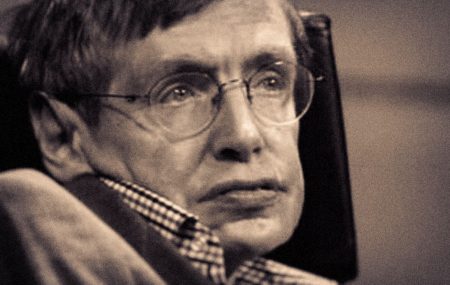March 14, 2018 – There are numerous obituaries and articles today on the Internet, print, and broadcast media about Stephen Hawking, the world’s most renowned theoretical physicist, who passed away early today. I remember reading “A Brief History of Time” in 1988 and marveling at how a man physically locked in a body wracked by amyotrophic lateral sclerosis (ALS) could be so visionary, seeing the cosmos and describing it in ways never stated before. Hawking was 76, an unusually long life for someone suffering from ALS. Maybe that was because of mind over matter as he continued to study and write about black holes, dark matter, relativity, the Big Bang, what came before the Big Bang, and the nature of space-time in governing our Universe. Hawking was continually working on developing a grand unifying theory to explain existence itself. Like his predecessor, Albert Einstein, he fell short of that goal. But the accumulation of his life’s work expanded our understanding of where we all came from, star stuff.
In the last couple of years of his life, Hawking warned humanity that we were on a path to extinction; that if we didn’t start planning a getaway to other worlds, we would soon consume Earth in its entirety leaving us with no home. He also feared the rise of unfettered artificial intelligence stating that thinking machines in the near future would hasten our extinction.
For Hawking whose body began failing him in his twenties, one could say he was continually in search of an out-of-world, out-of-body experience. It’s just too bad we hadn’t yet come up with the technology and science to upload all that incredible Hawking knowledge into a computer to continue his work.
In the past, I have written about entrepreneurs putting money into, and researchers pursuing the science and technology needed to upload a human brain. A project called the 2045 Initiative with a membership club of over 20,000 and the backing of billionaires, has been working on the development of both neural interfaces and robotics to create a human-machine, all the knowledge contained within our brains, our consciousness, but hosted in a non-biological carrier.
When the 2045 Initiative met in New York City in July of 2013 they set future milestones:
- 2020 – the creation of avatars controlled by a brain-computer interface
- 2025 – development of life support systems to keep a human brain alive while no longer in a body
- 2035 – the complete modeling of human consciousness and the transfer of it to an artificial carrier
- 2045 – the evolution of a new species, a human-machine, immortal, and capable of leaving Earth to find other worlds to explore
I’m not so sure Hawking would have wanted to be the first to try out the brain-computer interface and experience the world through an avatar. His death today came up two years short of the timetable described above.
We will miss the mind and the courage of this man.









